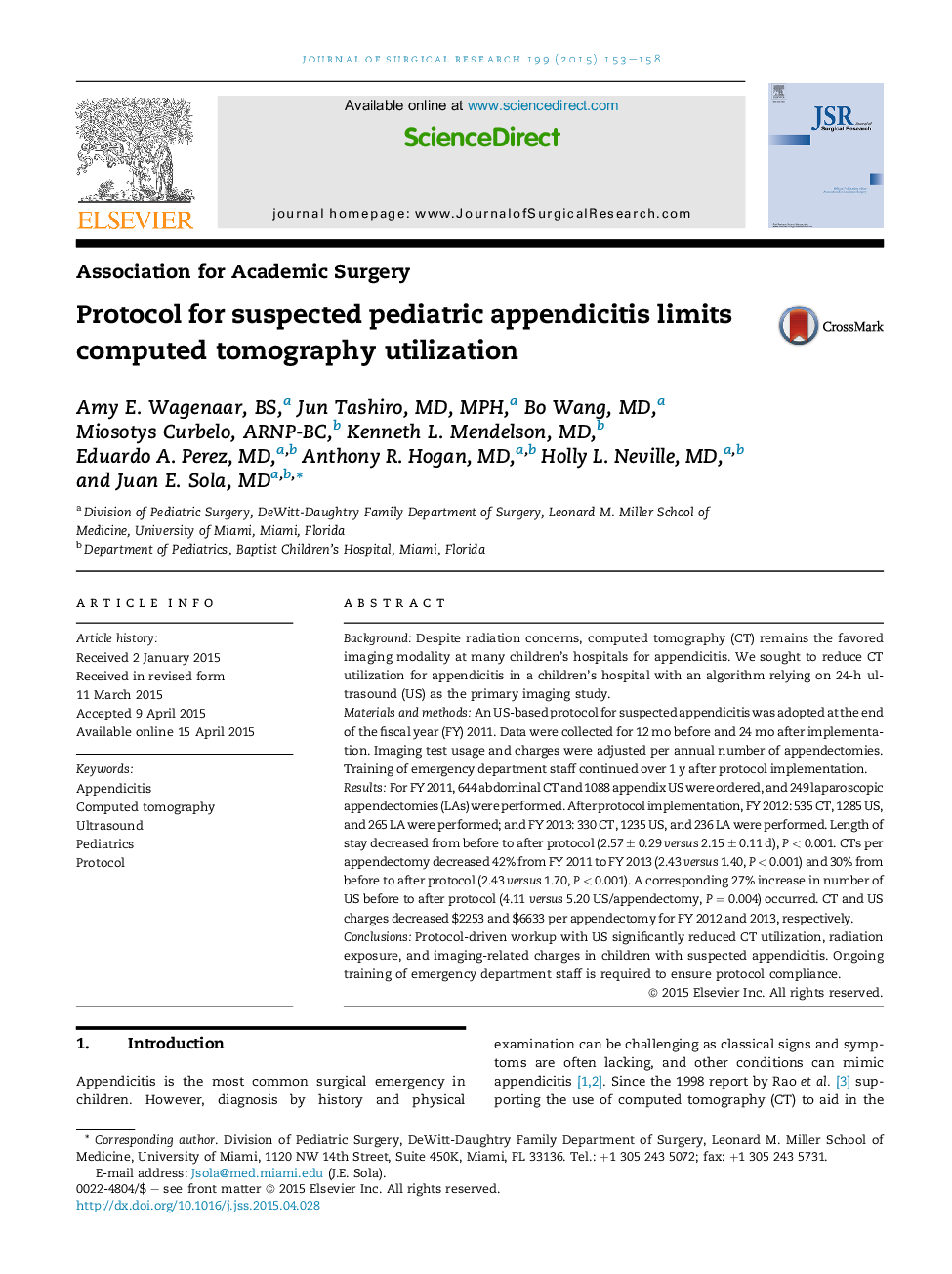| Article ID | Journal | Published Year | Pages | File Type |
|---|---|---|---|---|
| 4299608 | Journal of Surgical Research | 2015 | 6 Pages |
BackgroundDespite radiation concerns, computed tomography (CT) remains the favored imaging modality at many children's hospitals for appendicitis. We sought to reduce CT utilization for appendicitis in a children's hospital with an algorithm relying on 24-h ultrasound (US) as the primary imaging study.Materials and methodsAn US-based protocol for suspected appendicitis was adopted at the end of the fiscal year (FY) 2011. Data were collected for 12 mo before and 24 mo after implementation. Imaging test usage and charges were adjusted per annual number of appendectomies. Training of emergency department staff continued over 1 y after protocol implementation.ResultsFor FY 2011, 644 abdominal CT and 1088 appendix US were ordered, and 249 laparoscopic appendectomies (LAs) were performed. After protocol implementation, FY 2012: 535 CT, 1285 US, and 265 LA were performed; and FY 2013: 330 CT, 1235 US, and 236 LA were performed. Length of stay decreased from before to after protocol (2.57 ± 0.29 versus 2.15 ± 0.11 d), P < 0.001. CTs per appendectomy decreased 42% from FY 2011 to FY 2013 (2.43 versus 1.40, P < 0.001) and 30% from before to after protocol (2.43 versus 1.70, P < 0.001). A corresponding 27% increase in number of US before to after protocol (4.11 versus 5.20 US/appendectomy, P = 0.004) occurred. CT and US charges decreased $2253 and $6633 per appendectomy for FY 2012 and 2013, respectively.ConclusionsProtocol-driven workup with US significantly reduced CT utilization, radiation exposure, and imaging-related charges in children with suspected appendicitis. Ongoing training of emergency department staff is required to ensure protocol compliance.
